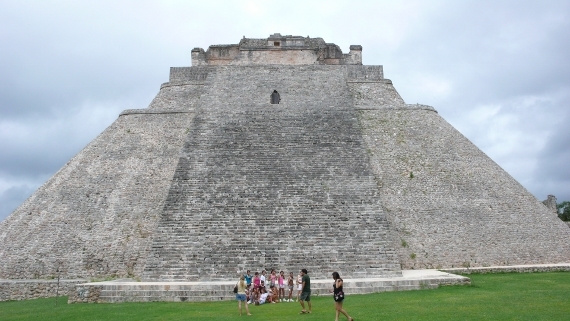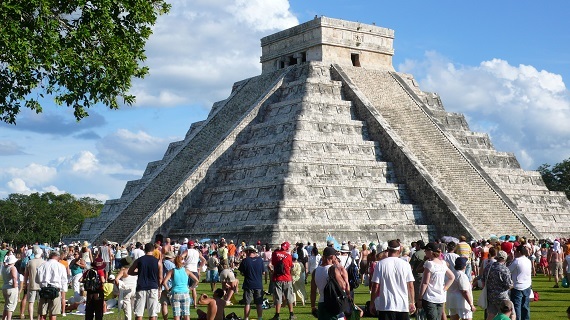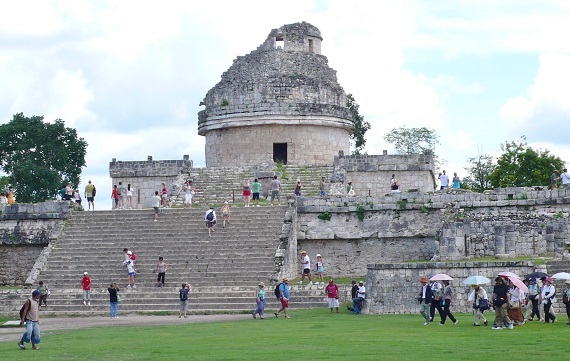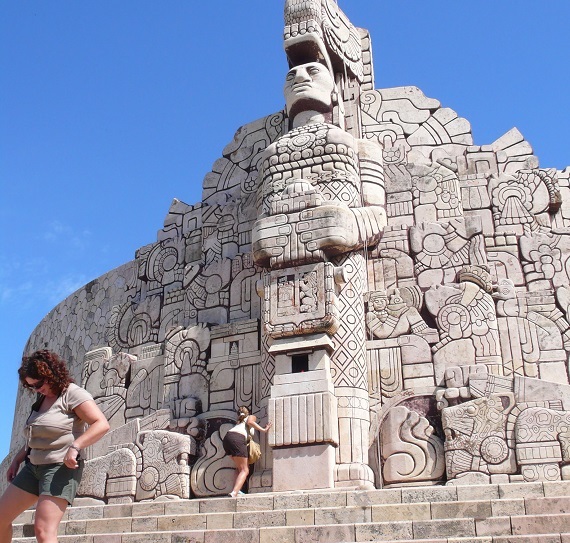
Tourists scamper around a Maya monument in Merida.
A stroll through the colonial district of Merida out in eastern Mexico's Yucatan Peninsula takes you back to the 18th century, when the surrounding henequen plantations made this city one of the richest spots on Earth. You half expect to see henequen barons in silk shirts, velvet breeches and knee-high leather boots strutting off to oversee the production of rope and twine from the plants' sword-shaped leaves. You can imagine ladies in hooped skirts and white petticoats heading to afternoon teas. Silver-plated carriages, it's said, once lined Merida's cobbled lanes like Rolls-Royces along Beverly Hills' Rodeo Drive.
Your walk through the historic district takes you past the overseers' swanky mansions - at one time reportedly the homes of more millionaires than anyplace else in the country - government palaces, block-long museums, a classic grand cathedral and other landmarks in the city's rich mix of Maya and Spanish cultures.
Spanish conquistadores showed up in 1542, ran the local Maya off, ripped the city down (the Maya called it T'ho, meaning City of the Five Hills) and built a new one for themselves on the spot. The bearded foreigners called it Merida after a city of the same name in Spain.
After a while the Maya started to drift back, at first to work in the fields, ranches and kitchens of the sprawling haciendas of their new Spanish landlords. In the mid-1800s, thousands more came out of the jungle to take jobs on henequen fields planted by the invaders. When the debut of synthetic fibers took the wind out of the henequen market in the early 1900s, many of the workers moved into town.
Today, it's estimated that well over half of Merida's million or so residents speak both Maya and Spanish, a good number with Maya as their primary language.
Besides Merida's own attractions, the city is the northern Yucatan's jumping off spot for day-trips to the region's famous archaeological sites, most less than two hours away. One popular tour takes visitors to the iconic Maya city of Chichen Itza, where the signature pyramid - one of the New Seven Wonders of the World - is the picture-postcard Temple of Kukulkan. The site typically hosts around 5,000 visitors a day.
Another eye-popper on the tour routes is the magnificent Maya city of Uxmal (pronounced oosh-mahl). Here, the distinctively oval Temple of the Magician (according to legend it was built in a single night) looms over acres of other temples, government buildings, ball courts and the like. Among the site's main structures are the Nunnery Quadrangle (actually a kind of office building), the Palace of the Governor (known for its 320-foot-long mosaic facade) and the House of the Turtles (so named for the turtle carvings on its doorway moldings).
A newer attraction on the tour routes - it's only 450 years old - is a colonial town full of yellow buildings called Izamal. One of the country's pueblos magicos (magic cities), Izamal features the 75 arches of the Convent of San Antonia de Padua on a hill covering what was once the big Maya Temple of Popol-chac.
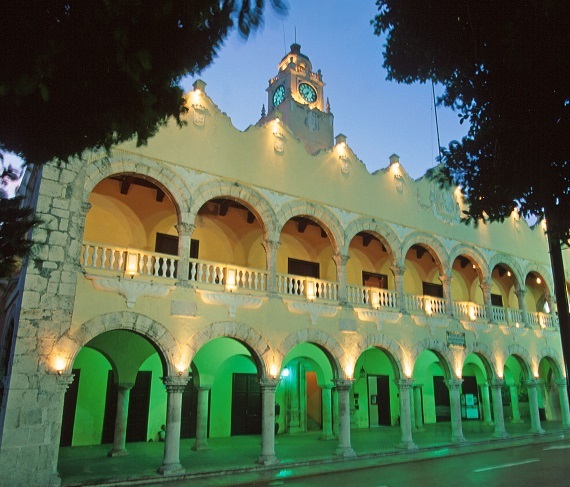
Izamal - well worth seeing - is about a 40-mile drive from Merida.
For a change of pace, still another tour goes to a 146,000-acre biosphere reserve when tens of thousands of pink flamingos can be seen munching away on shrimp-like crustaceans in the shallow offshore waters.
The tours usually get back to Merida in time for visitors to enjoy the city's traditional street festivals. You might find crowds watching folkloric dancers on one block, strolling minstrels on another and salsa bands on still another. Getting hungry? There are lots of food stands around the festivities selling Merida's classic lime soup, pipal pig (pulled pork in a tangy tomato sauce), stuffed cheese meringues and other tasty dishes.
Everyone on the people-packed streets (vehicle traffic isn't allowed on certain nights) whoops it up together, locals and tourists alike, playing out a feast for the eyes and the palate that's been going on as long as anyone here can remember.
The Meridian stewpot still boils over with the flavor of its mixed heritage, but modern times have added new spices to the gumbo. For example, Volkswagens now mix with calesa horsedrawn carriages on the city streets, youngsters dressed in hip-hop clothes sip coffee with friends in old-time Maya garb, and shoppers can dicker for goods at streetcorner markets or shell out their pesos at super-stores such as Costco, Sam's Club and Walmart.
A veteran tour guide says his customers have kept up with the times, too. "I remember when tourists wouldn't dream of going out to the pyramids in anything but suits and long dresses, even during our hot, humid summers," he recalls. "Today, anything goes... some (customers) even show up barefoot."
Photos by Bob Schulman.
